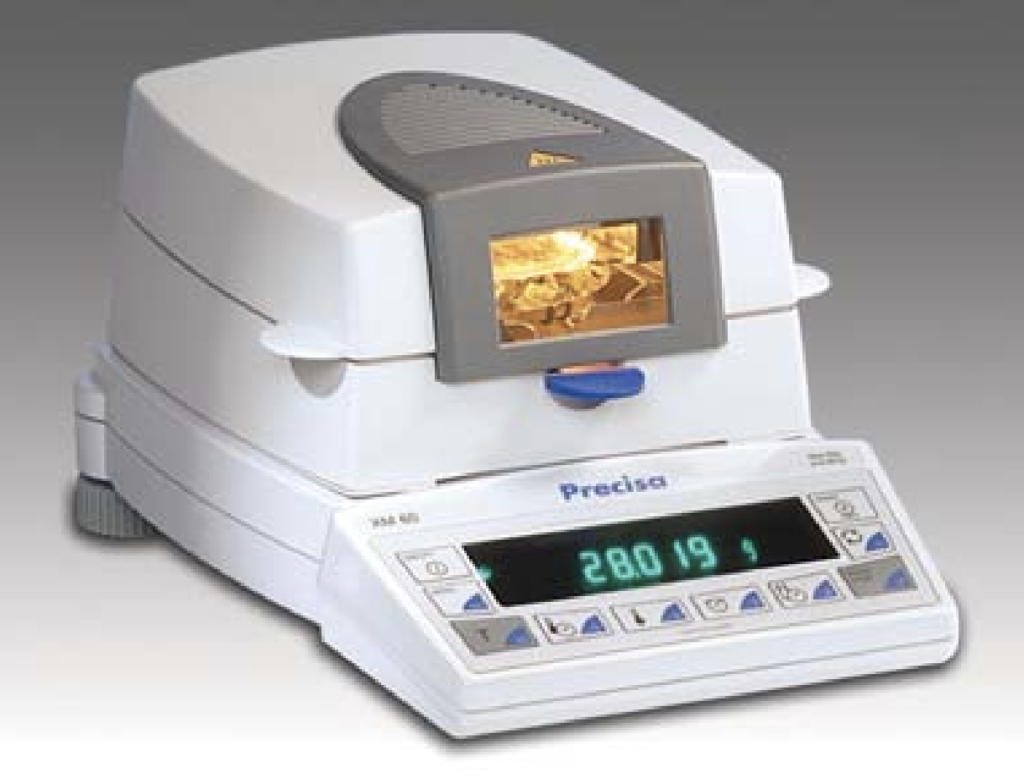
How to Prepare a Sample for Moisture Analysis
Moisture content is a critical quality attribute across a wide range of industries, from food and pharmaceuticals to chemicals and manufacturing. Accurate moisture analysis is essential for quality control, process optimization, and regulatory compliance. While moisture analyzers simplify the measurement process, proper sample preparation is paramount for obtaining reliable and meaningful results. This guide provides a comprehensive overview of how to prepare a sample for moisture analysis, ensuring accurate and consistent measurements.
Understanding Moisture Analysis Principles
Moisture analyzers, also known as moisture balances, typically employ the thermogravimetric method. This technique measures the weight loss of a sample upon heating, which is attributed to the evaporation of moisture. It’s crucial to understand that “moisture” in this context refers to any volatile substance driven off by heat, not just water. This can include fats, oils, alcohols, solvents, and other volatile compounds. A moisture analyzer, like the Precisa XM 60, combines a precision balance with a an optional heating unit (often a halogen lamp) to perform this measurement quickly and accurately. It also offers a readability of 0.001 gram or 0.01 percent moisture content, highlighting the precision achievable with modern instruments.
The Importance of Proper Sample Preparation
Different materials behave differently during moisture analysis. Therefore, proper sample preparation is crucial to ensure accurate and representative results. Inadequate preparation can lead to:
- Inaccurate Moisture Content: If the sample is not representative of the bulk material or if it undergoes changes before analysis, the measured moisture content will be misleading.
- Inconsistent Results: Variations in sample preparation can lead to inconsistent results, making it difficult to compare measurements and track trends.
- Prolonged Analysis Time: Improper sample distribution can slow down the drying process and increase analysis time.
- Damage to Equipment: Some samples can be corrosive or sticky, potentially damaging the moisture analyzer if not handled correctly.
Step-by-Step Guide to Sample Preparation
- Representative Sampling: The first and most critical step is obtaining a representative sample of the material being analyzed. This ensures that the measured moisture content accurately reflects the moisture content of the entire batch or lot. Consider the nature of the material and use appropriate sampling techniques to obtain a homogeneous sample.
- Timing and Storage: Samples should ideally be prepared and analyzed immediately to minimize moisture exchange with the surrounding environment. If immediate analysis is not possible, store samples in airtight containers to prevent moisture gain or loss.
- Sample Size: Refer to the moisture analyzer’s operating instructions for the recommended sample size. Using the correct amount of sample is essential for accurate measurements.
- Sample Distribution: Even and thin distribution of the sample on the weighing pan is critical for uniform heating and efficient moisture evaporation. Avoid clumping or layering of the sample, which can lead to uneven drying and inaccurate results.
- Particle Size: Coarse samples should be reduced in size using a mortar, grinder, or other appropriate method. Finer particle size increases the surface area exposed to heat, promoting faster and more complete drying. However, take precautions to avoid heating the sample during the grinding process, as this can prematurely release moisture and affect the results.
- Material Properties: Consider the specific properties of the material being analyzed:
- Liquids, Pastes, and Slurries: These materials often require special handling to ensure even distribution and prevent splashing or splattering during heating. Using fiberglass filters can be beneficial. The filter provides a support structure, increases surface area for evaporation, and prevents the sample from spreading or splattering. In some cases, sandwiching the sample between two filters may be necessary.
- Light vs. Dark Samples: Light-colored samples reflect more heat than dark-colored samples. This can affect drying time. Adjust the drying parameters accordingly or use a sample coating to improve heat absorption.
- Oily or Sticky Samples: These samples can be challenging to handle and may require special cleaning procedures to prevent contamination of the moisture analyzer.
- Programming the Moisture Analyzer: Consult the instrument’s manual for specific instructions on programming the moisture analyzer. This includes setting the drying temperature, drying time, and other relevant parameters. Many manuals provide tables of recommended settings for various materials.
Tips for Optimizing Moisture Analysis
- Calibration and Maintenance: Regularly calibrate the moisture analyzer according to the manufacturer’s instructions to ensure accuracy. Perform routine maintenance, such as cleaning the weighing pan and heating unit, to maintain optimal performance.
- Method Development: For new materials or complex matrices, it may be necessary to develop a specific method for moisture analysis. This involves optimizing the drying parameters to achieve accurate and consistent results.
- Validation: Validate the moisture analysis method to ensure that it is accurate, precise, and reliable. This involves analyzing certified reference materials or comparing results with other established methods.
Summary
Proper sample preparation is a fundamental aspect of accurate moisture analysis. By following the guidelines on how to prepare a sample for moisture analysis outlined in this guide, you can ensure that your measurements are reliable, consistent, and representative of the material being analyzed. This will contribute to improved quality control, process optimization, and regulatory compliance.

